The slow lorises (Nycticebus spp.) are the one and only nocturnal primate that has venom. Unfortunately, based on IUCN data, all of the Nycticebus spp.’s population are decreasing. Their major threats are the belief of the benefit for human medication, local and national illegal trading, and habitat degradation and fragmentation due to agroforestry expansion. Here in Cipaganti, the lorises also have other threats, not only the land clearing for agroforest, but also from the other aspects such as electricity and dogs.
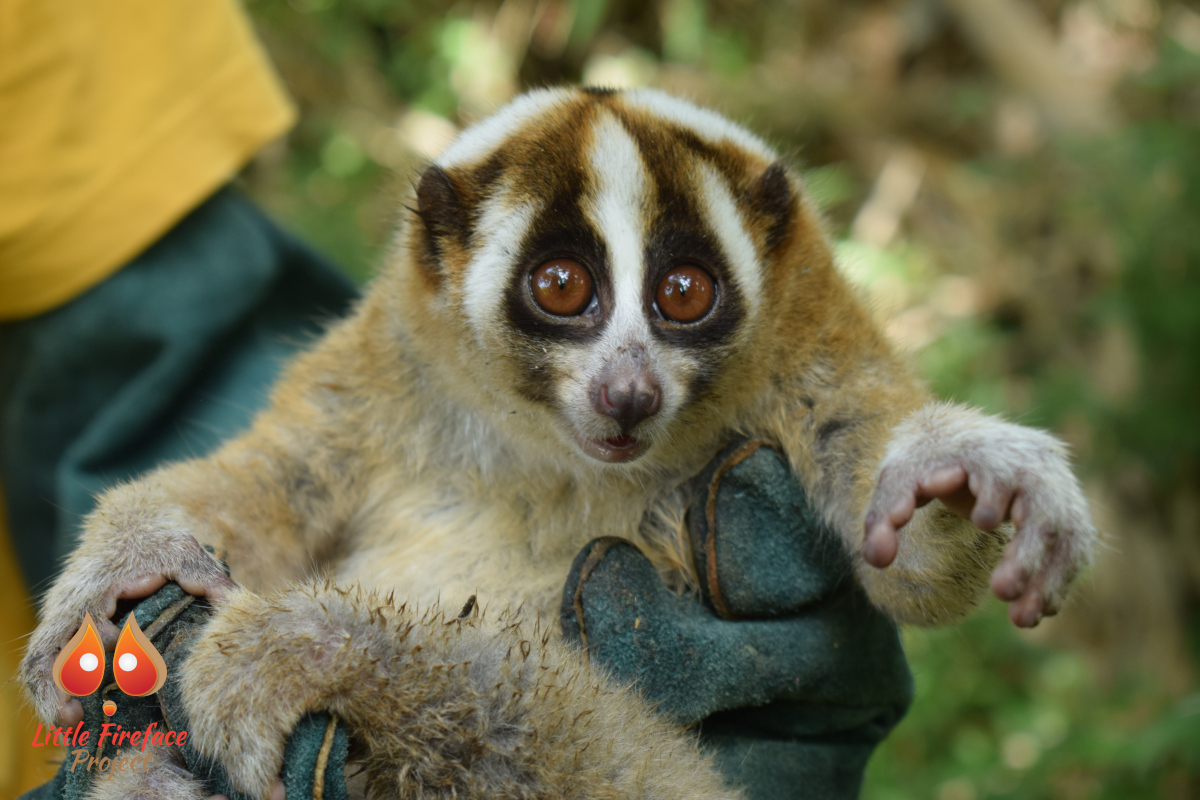
This arboreal mammal loves to wander and move from one place to another, especially the subadults looking for their own home range; we called this phase dispersing. They often travel through our installed waterline to cross the open farm, on the ground, through chayote plantation, or more challenging substrate: the rooftop and electricity cable. It is frequent for us we in the field station to receive lorises brought by villagers. The villagers usually argued that they found the lorises wondered in unusual places. Such as near the villagers’ farm, on the ground, or inside or on top of the villagers’ houses. The villagers have a concern for those lorises. The villagers think there the loris will be harmed if they stay in that unusual places. So the villager catches the loris and ‘rescues’ by bringing it to our house.
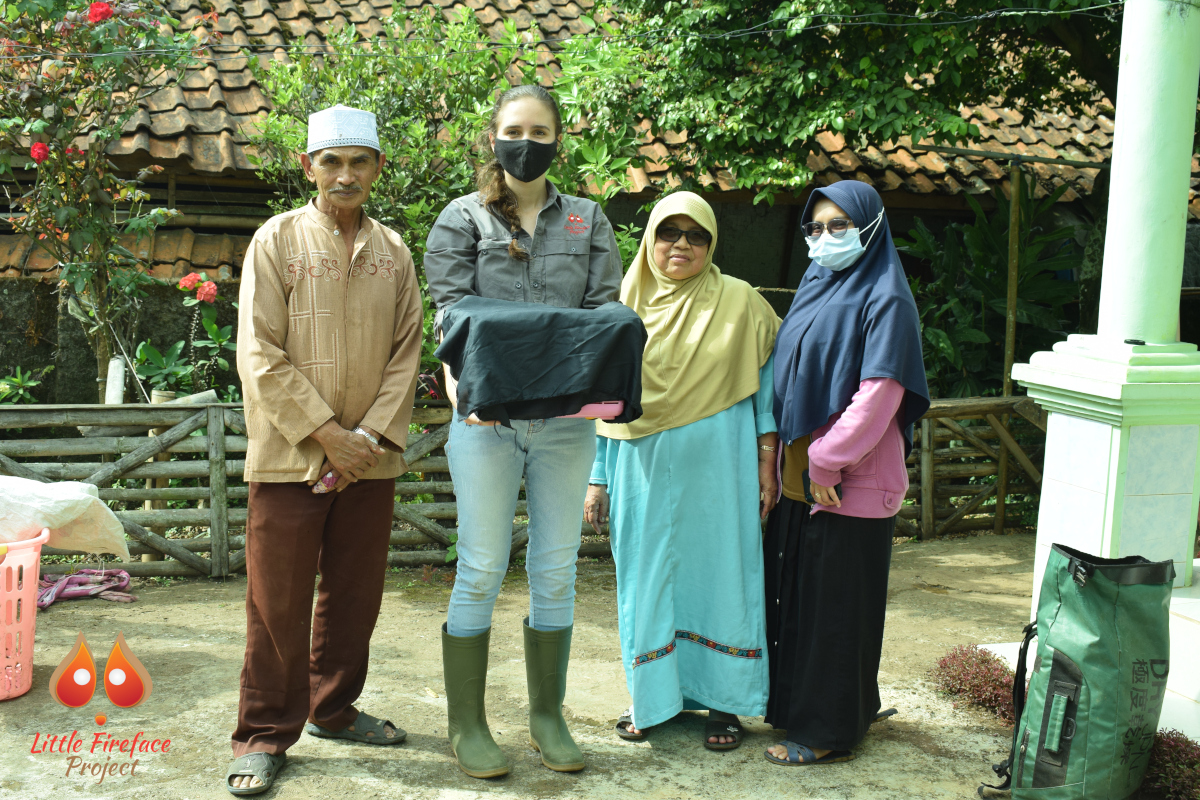
When the lorises arrive at our field station, we examine them. Usually, the lorises are healthy, in good condition, so we released them as soon as possible to the nearest habitat where the first time villagers found them. But sometimes the villagers also bring injured lorises, mild or severe. The injury can be caused by anything, whether they get the scars through the fight with other loris or other animals (e.g., dogs) or caused by electrocution.
Electrocution Cases
In 2020, we used to have 2 adult lorises brought by the villagers and has an injury in their eyes and the signs of electrocution in which are muscle atrophy and wounds in the body, arms, or legs. Their condition was sad. One of them has a severe injury, and another has severe muscle atrophy, so we brought them to the vet in Cikananga Wildlife Center for further medical treatment. After several days there, we got the news that they did not survive. In Cikananga, too, most of the electrocution cases end with none of the lorises surviving. All electrocution cases have burn wounds on the hands, long diagonal injuries on their body from arms to legs, and distention bladder.
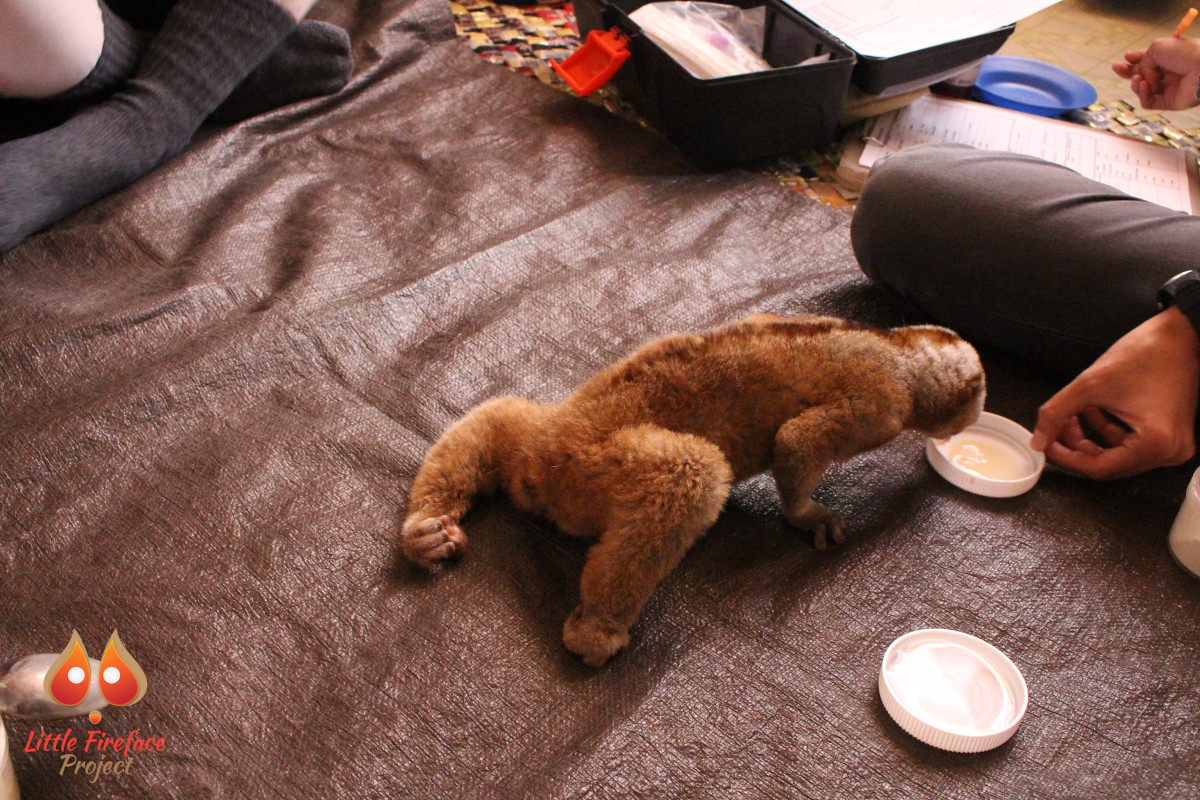
Another example of this case is one of our collared lorises that dispersed in mid-2020. She was wandering in other females lorises’ home range and also in the residential area. When we observed her, we saw she moved weirdly, like can not move one of her limbs. After we captured her, we saw another wound on her torso, and yes, her left limb has an open wound but is not infected. Thankfully, she still can move and climb, so we just medicated her open wound with iodine and released her after that. We decided not to bring her to the vet because other than she can move, she is still a wild animal, meaning she can find her own medication. But after several weeks of observing her, she moved outside our study area, showing evidence that she was very able to move. In the end, we took her collar off. The conclusion for this case is she can survive after the electrocution and hopefully a happy ending that she find her own home range!
Dog Bite Cases
Not many lorises survived this kind of case. Dogs can be very vicious to things they think are threatening since they have been taught to be guardian dogs for farmers. In 2020 we got one of our collared lorises died because of a dog bite. This is obvious because the collar was torn, he was missing both legs and left arm, also the stomach ripped open. The body is tangled in a chayote plantation which is not very high and can be reached by dogs.
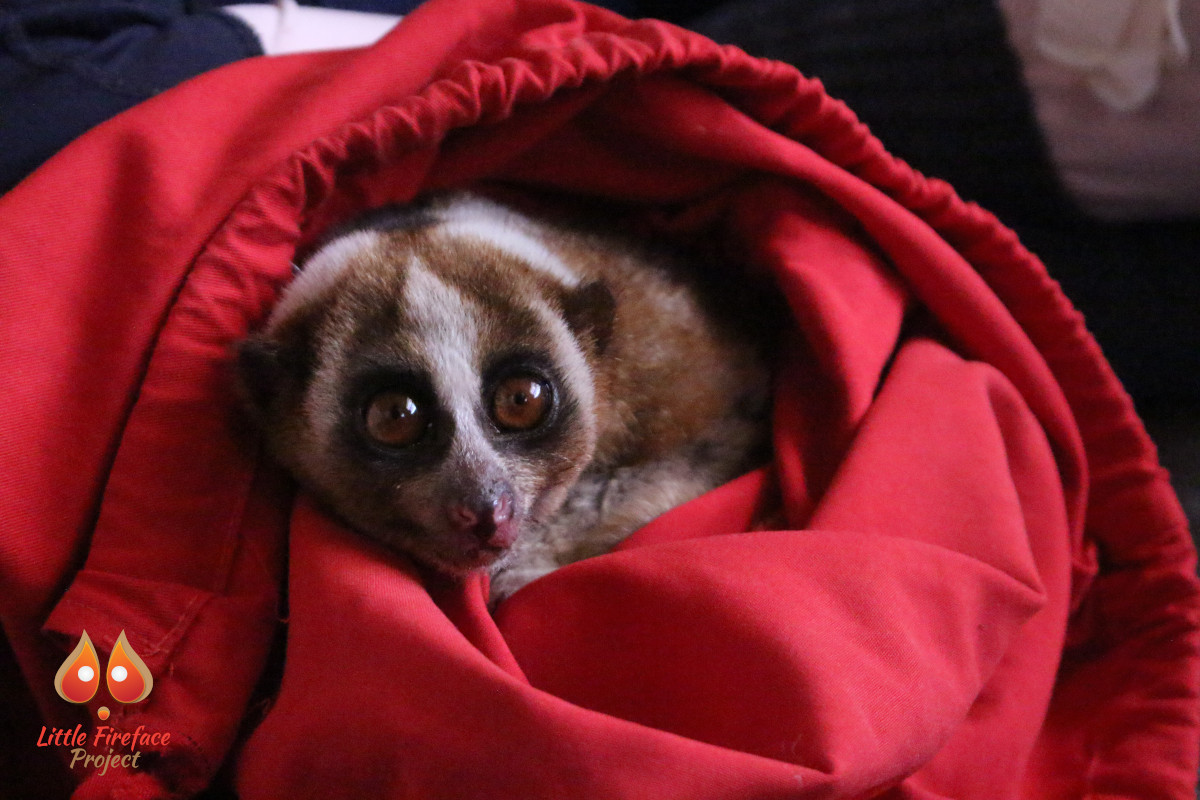
Yup, traveling in both chayote and ground can threaten the lorises, as many dogs can reach them and start attacking them. However, it is unlikely the dogs consume the loris. In 2021 we also got one loris brought by the villagers. He had an open wound until the bone was exposed and also infected. Not sure, but the injury might be caused by the dog bite. Because of his condition, we took him to the vet in Cikananga for further treatment. After one week in there, we heard that he also didn’t survive due to his infection.
Overall,
The electrocution case is deadly since the lorises are exposed to high electrical voltage and have a long duration of exposure to the electricity. We can see from the wounds also. Based on both lorises brought by the villagers, they have a severe injury. They probably experienced such high voltage and a pretty long duration of exposure to the electricity. At the same time, probably one of our collared lorises could save her life from that deadly threat. About the dog bite, this can be very deadly to the lorises as dogs are one of their predator on the ground. I think only luck can save the lorises from this ample and fast predator.
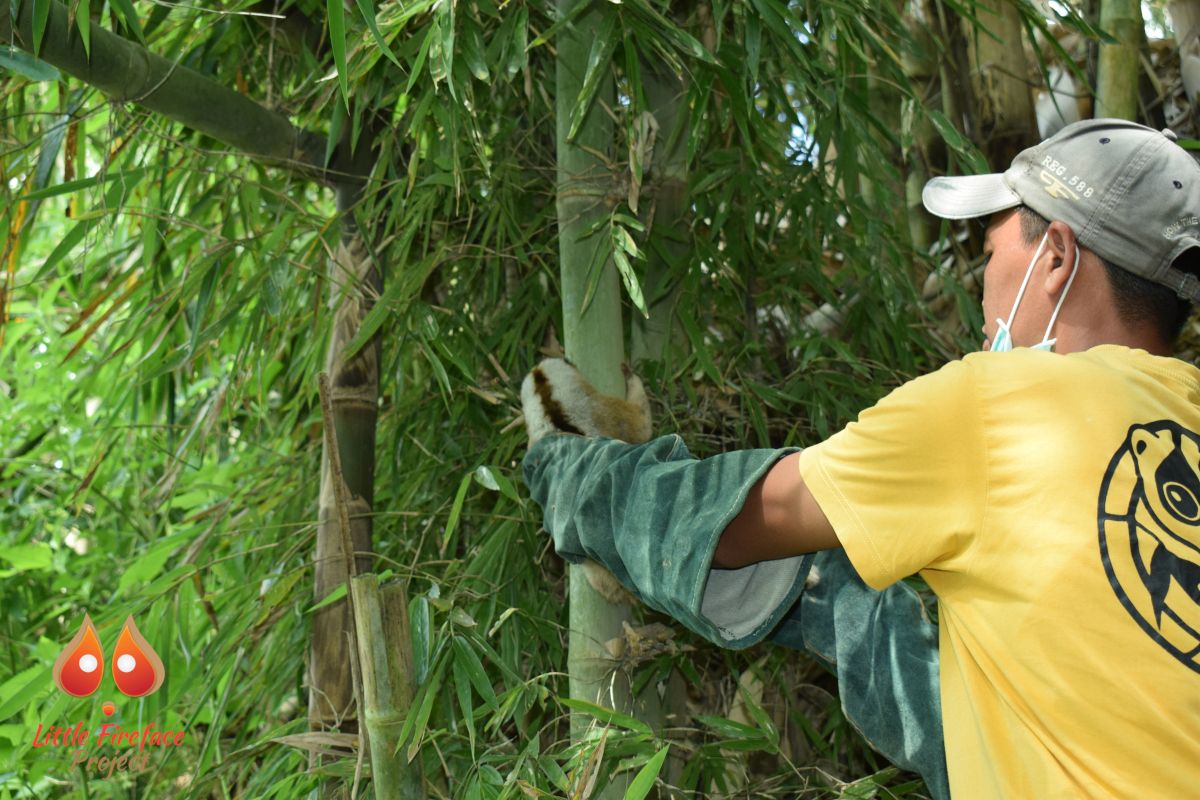
Those four examples are the data that we got because we saw them. There are probably still many more cases out there that we can not record or not report. This occasion can also be their life threat, especially if they live in the agroforestry areas such as our village here in Cipaganti.
———————————–
About the writer: Esther Adinda – Research Assistant in LFP. Esther is a forestry student who is passionate to work at the field and are excited to learn the behavioural ecology from loris and other animals.

